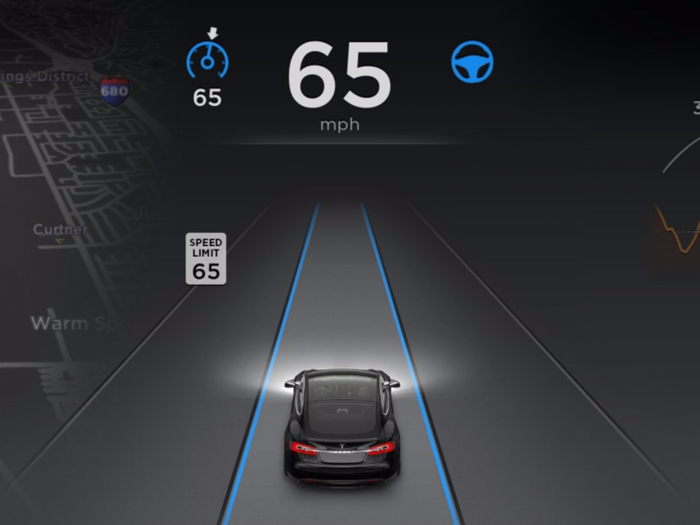
The hardware that makes up Tesla's self-driving system includes a forward radar, a forward-looking camera, a high-precision digitally-controlled electric assist braking system, and 12 long-range ultrasonic sensors placed around the car.

The senors enable the vehicle to sense when something is too close and gauge the appropriate distance so that it can do things like safely change lanes.
However, it should be noted that these sensors can be thrown off by things like debris covering them.


The camera is basically the system's eyes. It enables the car to detect traffic, pedestrians, road signs, lane markings, and anything else that might be in front of the vehicle. This information is then used to help the car drive itself.

To disengage Autopilot, you push the button on the end of the cruise control stalk, push the stalk forward, or press the brake. You can also disable Autosteer by slightly turning the wheel.

Tesla vehicles with Autopilot can also self-parallel park and self-park in perpendicular positions.
In January, the company also updated the system so that it can even enter or exit parking spots without a driver in the vehicle. Driver's can also "summon" their cars to pick them up.
There are plenty of things Tesla's Autopilot still shouldn't do, like driving in residential zones with street lights and stop signs. The system is intended for highway use only.


"The driver is still responsible for, and ultimately in control of, the car. What's more, you always have intuitive access to the information your car is using to inform its actions," Tesla said in a statement in October when it first released Autopilot.
The Autopilot system is designed to sense if your hands are on the wheel. If a you haven't touched the steering wheel in awhile it will alert you visually and audibly to take control.
If you still don't take control, the car will begin to slow itself down.

The camera, radar, ultrasonic sensors and GPS all work together to constantly provide real-time feedback from the Tesla fleet. This data is then used to improve the overall system.

 10 worst food combinations you must avoid as per ayurveda
10 worst food combinations you must avoid as per ayurveda
 Top seeds that keep you cool all summer
Top seeds that keep you cool all summer
 8 mouthwatering mango recipes to try this season
8 mouthwatering mango recipes to try this season

Copyright © 2024. Times Internet Limited. All rights reserved.For reprint rights. Times Syndication Service.